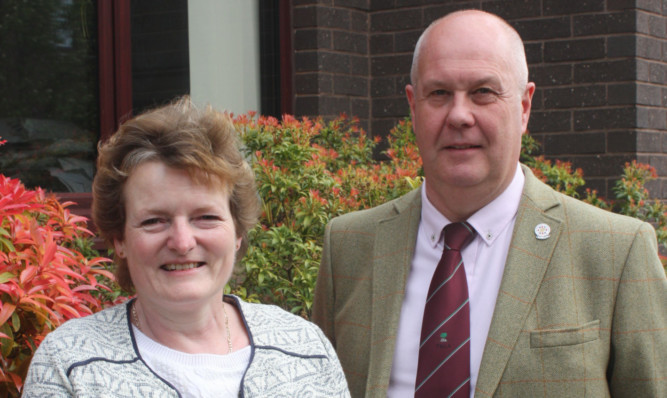GM crops, where are we now? What a topic and little wonder the seminar room at the James Hutton Institute at Invergowrie was standing room only yesterday, with a video link to the Aberdeen site swelling the audience.
To address the question, the Scottish Society for Crop Research had invited Dr Wendy Harwood, from the Crop Transformation Group at the John Innes Centre in Norwich.
The very antithesis of the ‘mad scientist’ tag used of old to describe anyone involved with what used to be called ‘Frankenstein foods’, she calmly described the progress made in genetic modification over 20 years.
The first crops involved were tobacco, petunia and sunflower, with high-pressure micro injection used to insert the desired genes into plant embryos.
This was superseded by a ballistic gene gun which, oddly, required a firearms certificate before it could be used.
Then helium under pressure was used, and now agrobacteria are often used to transfer the genes.
However, the most significant improvements are in ‘gene editing’.
The procedures are scientifically sophisticated but, in essence, editing makes gene transfer affordable and efficient. For example, in recent barley work 75% of selected plants were now retaining the desired mutations in the next plant generation.
“It is complicated but it is becoming simpler, and there are huge beneficial implications for human health and crop improvement,” said Dr Harwood.
Work funded by the Bill and Melinda Gates Foundation is under way at the John Innes Centre, aimed at developing cereal plants capable of fixing their own nitrogen requirements from the atmosphere as leguminous plants do.
Dr Harwood was reluctant to put a time frame on this, but feels this globally momentous development could be well advanced a decade from now.
All of this was of intense interest to the highly skilled JHI crop scientists and geneticists in the room yesterday. They use many of the same techniques in their laboratories but lack one vital advantage: the John Innes Centre has the capability to carry out field trials on its campus and at a nearby farm.
The Scottish Government’s robustly anti-GM stance stops JHI from testing the science in the same way.
Dr Harwood was careful to avoid the political dimension, but did say: “For this sort of work, it is no use just looking in the glasshouse. Crops have to be tested using farm-scale trials.”
Former Scottish Crop Research Institute chief executive Professor John Hillman pointed to the resulting loss in farm and research income, and asked: “Is this not worthy of a fresh analysis?”
Dr Harwood said that, from a standing start 20 years ago, GM cropping now covered 181 million hectares across the globe, although there was very little in Europe thanks to restricting legislation.
Around the world 82% of soya was GM, as was 68% of cotton. “If you are wearing a cotton shirt, it is odds on the fibres came from a GM crop,” she said.
New developments included approval in Bangladesh for an insect-resistant eggplant. Growers were previously spraying insecticides up to 80 times in a season, and now do not use any. Resistances would inevitably build up, but this was simply adaptive biology at work and was not solely a GM problem.
Good crop husbandry was as important as ever.
